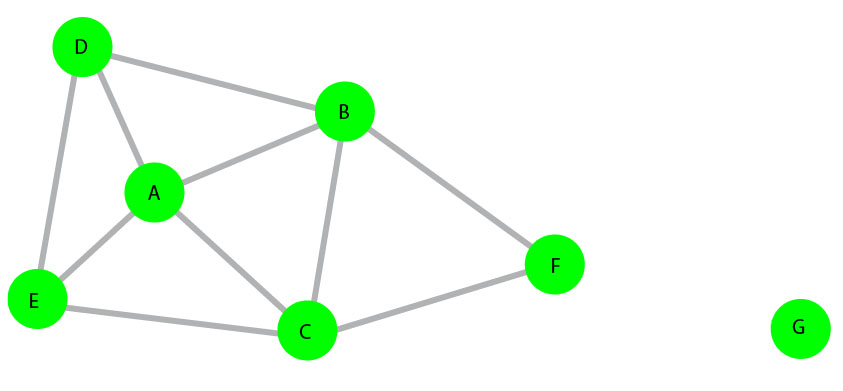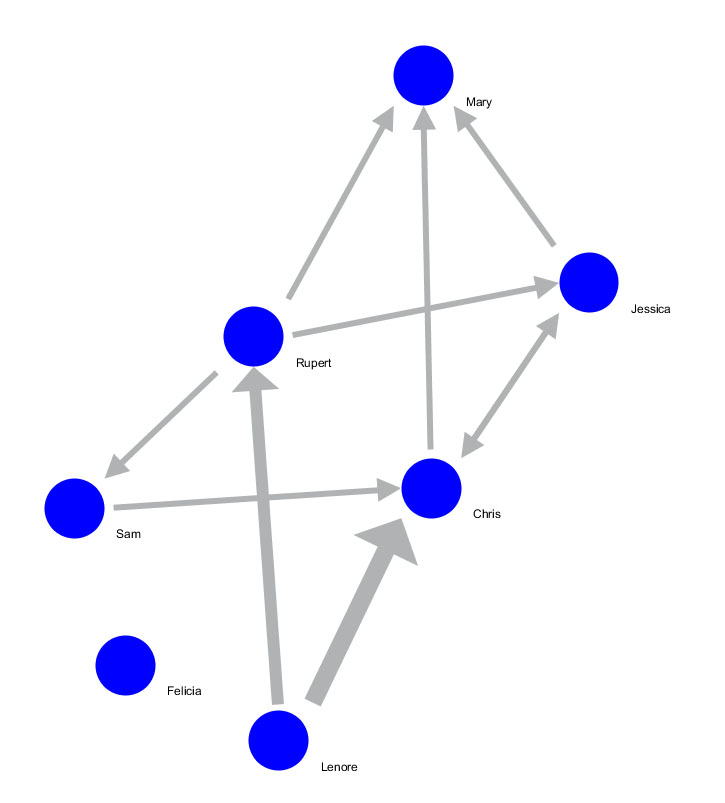This appendix will provide a very basic introduction to networks. This introduction is by no means comprehensive, but should be sufficient for those without network analysis experience to begin following the workflows in section 5 Sample Workflows. Networks, sometimes referred to as graphs, are comprised of two basic elements: points and lines. The points in a network represent entities and lines represent the relationship(s) that connect these points. The simple example below will illustrate this point:
These points and lines are often referred to by different terms. The table below should help you decipher any terms you encounter.
| Points | Lines |
|---|---|
| Vertices | Edges, Arcs* |
| Nodes | Links |
Throughout this manual we will refer to points as nodes and the lines as edges or arcs.*Arcs are directed edges, meaning that the relationship has a direction. You will see an example later in this introduction in the edge attribute section.
Node Attributes
Some important node attributes include:
Betweeness Centraility - is the number of shortest paths a node sits between. In the case of the network below, Node A has the highest betweeness centraility because it sits between four edges that connect to other nodes.
Degree - is the number of edges that connect to a node. For example, Node A has a degree of four and Node F only has a degree of 2.
Isolates - are nodes that are not connected to any others through edges. In the network below Node G is an example of an isolate.
Edge Attributes
Some important edge attributes include:
Shortest paths - shortest distance between two nodes. For example the shortest path from Lenore to Mary is through Rupert and not through Chris and Jessica.
Weight - strength of the tie represented by the thickness of the edges between nodes. In the example below, the edge between Lenore and Chris is the strongest.
Directionality - is the connection one-way or two-way? In the example below, and in most directed networks, directionality is indicated by arrows.
In-degree - is calculated by determining the number of edges that point to a node, for example Chris has an in-degree of 3 and Rupert only has an in-degree of 1
Out-degree - is calculated by determining the number of edges that point away from a node, for example Chris has an out-degree of 1 and Rupert has an out-degree of 3.


